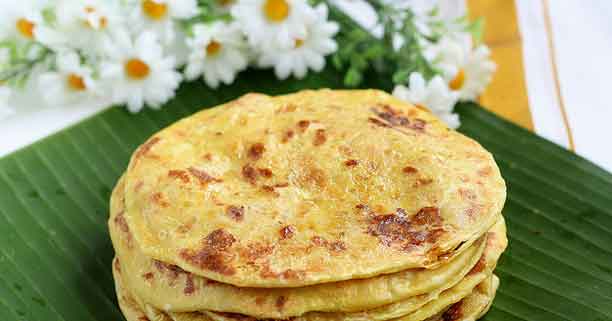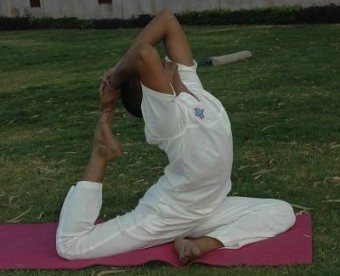Puran Poli
It’s a Gudi Padwa treat, sale but you don’t have to be Hindu to love it
It’s light, mind airy, and sweet and healthy to eat. It’s not as difficult to make as people say, but it does need more skill, time and practice than a French crepe suzette. It doesn’t belong to the family of flaky parathas or rustic bhakris but because it’s baked on a dry griddle, we could label it a sweet, stuffed, Indian bread. There’s no equivalent in any cuisine I googled.
The puran poli is traditionally eaten at Holi and for Gudi Padwa.
To make it, you need two hours undisturbed time to yourself, and a mate to help around with the chatting, kneading, experimenting, eating.
Use a standard coffee mug for measurements. One mugful of gram dal without the skin, another of sugar, a half of plain white flour, a quarter of any not-strongly-flavoured oil, and powders of cardamom, mace and saffron (just a pinch of each). Keep handy some water, salt, rolling pin, griddle, gas-stove (because that’s the only one I know), pressure-cooker, wooden spatula, steel spatula, and a ‘soup-machine’ (that old-fashioned steel gadget with holes in steel plates and a handle that rotates blades that mash and sieve boiled vegetables into a thick soup/puree). If you don’t have a pressure-cooker, make the time three and a half hours. If you don’t have a soup-machine, figure out a way to puree the cooked gram dal to a paste. It can be done by hand, but is not as efficient.
Here’s how you go about it: pressure cook the gram dal till it’s soft enough to melt when you touch it. Whilst it’s cooking, knead the flour with the oil, a pinch of salt and bash the dough with all the anger and frustration you can muster to make it rubbery and stretchy. Keep aside to rest, covered and undisturbed.
Strain out the stock from the cooked gram and use it for something else. Put the cooked dal back into cooker, add the sugar to it and keep simmering it till it’s thick enough to hold the wooden spatula vertically. Be prepared to do a lot of wiping and cleaning afterwards because this yellow messy (but yummy) dal splutters and protests as it blends with the sugar syrup. Whilst it’s still warm, puree it to a smooth consistency. Add the spice powders to it, knead well again. This puree is the filling, or the ‘puran’.
Divide dough and thick puree into equal parts. Make the puree into balls.
Put the griddle on low heat and keep it thus for the next one hour or until you’ve finished making the last ‘poli’ (or roti).
Take a bit of the dough (you will need lots of dry flour to roll it out) and roll it into a circle a little bigger than your palm. Place a ball of ‘puran’ in the centre and gently stretch the dough over and around to cover it completely.
 Puran, the filling
Puran, the filling
Roll it out very gently into a ‘roti’. This is a delicate exercise. Slide the ‘roti’ onto one hand and carefully place it on the griddle. When one side is done (check by lifting with the steel spatula and making sure it’s a little brown on the underside), toss it upside down to cook the other side.
When done, slip it off onto a plate, eat hot with melted ‘ghee’.
You can store these ‘polis’ in an airtight tin, separating them with squares of stiff paper, for up to a fortnight. They can be eaten cold, with cream, or even with a touch of mango pickle to neutralize the sweetness.
This is one recipe, when mastered, that always invites compliments. From lay persons and famous chefs alike. All you need is a spare afternoon and someone whose praise you value.
‘Tis the season to be cooking, tralalala… la Gudi Padwa.’
Happy, healthy New Year everybody.




